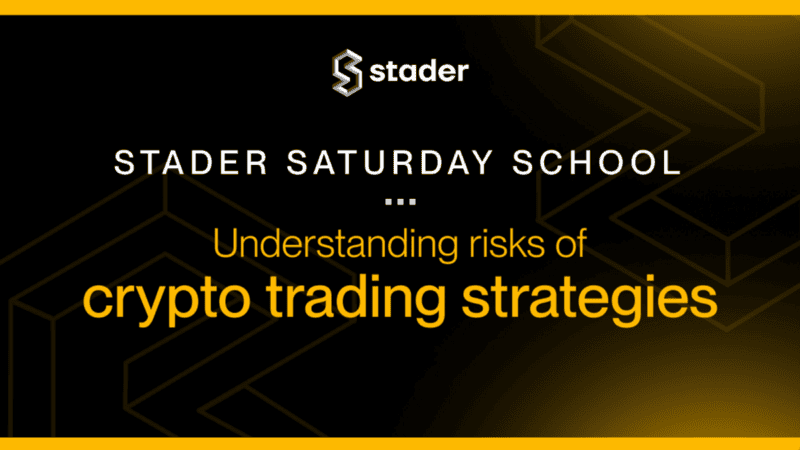Understanding risks of crypto trading strategies
Investment in any sort of asset entails some forms of risk factors. The risk depends on specific conditions related to the asset that you…

Investment in any sort of asset entails some forms of risk factors. The risk depends on specific conditions related to the asset that you invest in.
In this issue of Saturday School, we’ll discuss the types of risks involved in crypto trading and how to be mindful of them.
The three primary risks are:
- Impermanent Loss
- Smart Contract Risk
- Price Risk
Impermanent Loss
Impermanent loss is a common phenomenon in the world of AMMs (Automated Market Makers).
When you provide liquidity in a liquidity pool, there is a possibility that the total value of your liquidity will decrease because of negative asset price movement.
The more the price deeps, the more it exposes your liquidity to take a hit.
For example, you deposit 1 BNB and 100 BNBx in a liquidity pool. The liquidity pool requires the asset pair to be of equal value. Let’s assume that at the time of the deposit the price of 1 BNB = 100 BNBx and 1 BNBx = $1.
So the total deposited amount is 200 USD.
The pool currently has a total of 10 BNB and 1000 BNBx. That means you have 10% ownership of the pool.
Now the price of BNB suddenly increases to 400 BNBx. But since the asset pair is required to be of equal value, arbitrage traders start adding more BNBx to the pool and reduce the number of BNB until it reaches equilibrium.
When the arbitrage traders are done, the pool will have 5 BNB and 2000 BNBx.
The current 10% of the total pool is $400 (0.5 BNB and 200 BNBx). Which is more than you deposited in the pool.
But if you hadn’t deposited the asset, your current asset value would have been $500.
This is what impermanent loss looks like.
The best way to avoid impermanent loss is to make sure the trading fees in the AMM are high enough to compensate for any such loss.
Smart Contract Risk
Smart contract risks come in different shapes and forms. However, most of the time a smart contract risk is a vulnerability in the smart contract that a hacker can exploit to hack the system.
In just 2022 alone, over $2 billion was stolen due to some form of a smart contract vulnerability in the system. Smart contracts often play a large part in it.
The best way to make sure that a smart contract is safe is to go through smart contract audits. Stader’s smart contract has been audited by Halborn and Peckshield, two major smart contract auditors in the world.
Price Risk
Price Risk is a unique type of risk that primarily comes into effect in leverage trading or options trading.
Whenever you trade in derivative instruments or margin trade, you amplify the risk exposure by a lot. That makes you more vulnerable to price risk.
Price risk is basically a temporary fluctuation of price leading to a destructive liquidity event.
Let’s try to understand it in layman’s terms.
You have opened a 10X leverage position on a crypto asset priced at $1000, and you have put in $100 as collateral/premium.
If the price increases by 20%, you will book a profit of $200. Whereas if you had invested your own capital ($100 in this case), your profit would have only been $20.
But on the downside, if the price decreases by 10% for a moment, you lose all of your capital. This is called a Margin Call.
To mitigate price risk, the best strategy is to use Stop Loss features to prevent losses from being greater than acceptable.
For example, if you set up a stop loss at 2%`price decrease, you’ll only lose $20 in this trade and liquidate your position with $80.